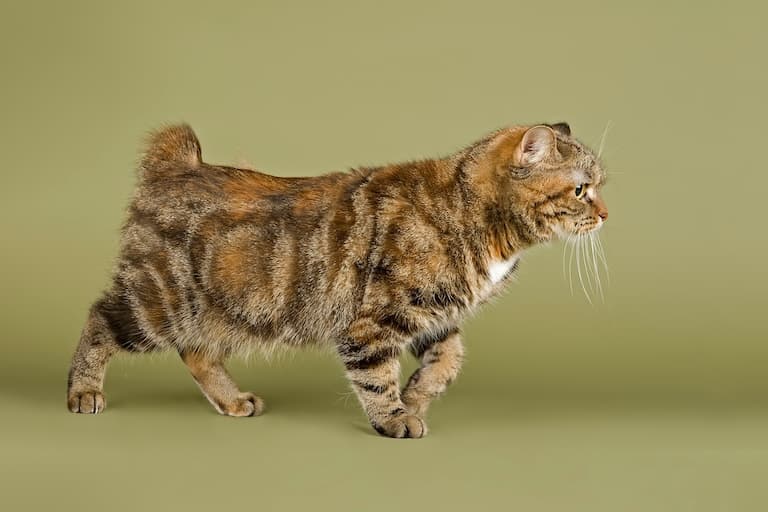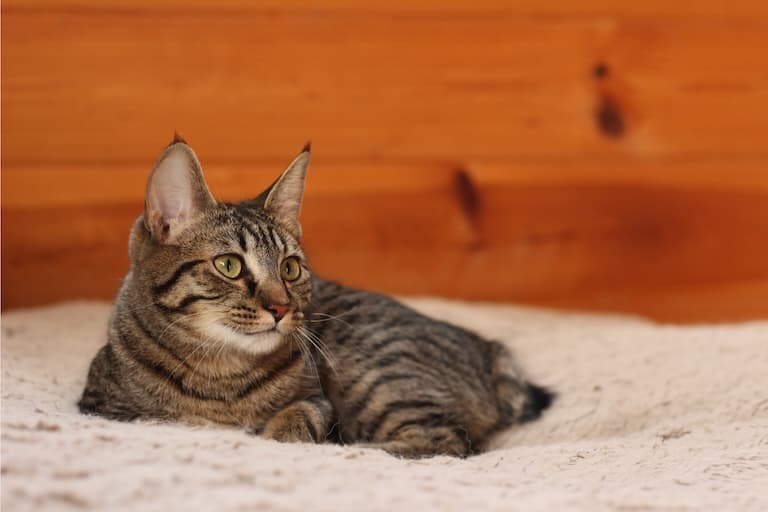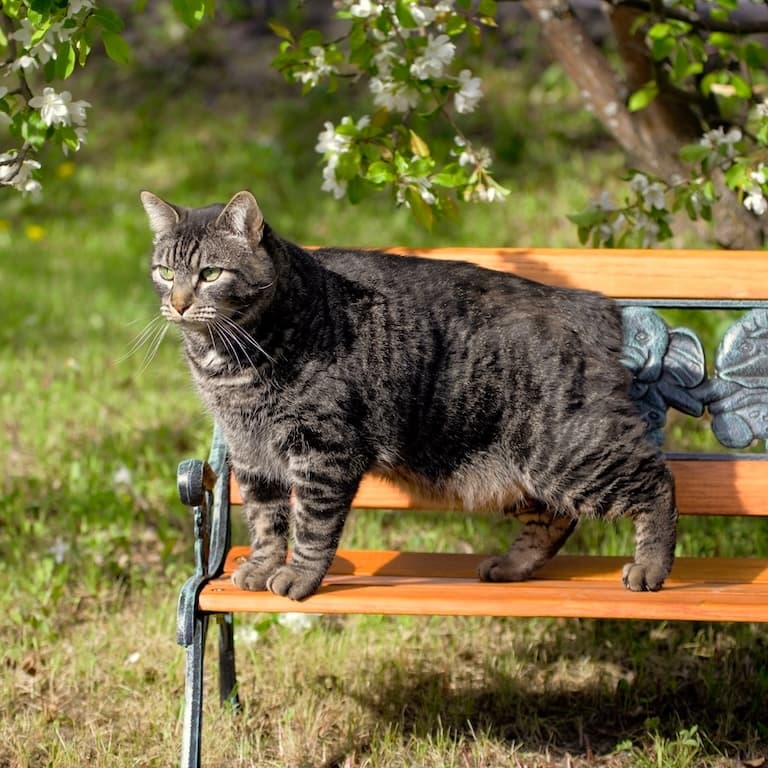Manx Cat Profile
Some of the features on today’s animal have names like those a 19th-century factory worker would give to his fingers: Lumpy, stumpy, stubby and longie – but for the Manx cat breed, these are desired characteristics.
This domestic cat wasn’t bred for its short or missing tail, but it sure is now. And even before it was fashionable, it was the source of all kinds of fun myths.

Manx Cat Facts Overview
| Habitat: | Domestic |
| Location: | Worldwide |
| Lifespan: | 9 to 13 years |
| Size: | Medium to large |
| Weight: | Around 3 – 6 kg (7 to 14 lb) |
| Colour: | Varied: can be pretty much any cat colour |
| Diet: | Cat food |
| Predators: | None |
| Top Speed: | Cat speed |
| No. of Species: | 1 |
| Conservation Status: | Not listed |
Manx cats are one of the oldest breeds of domestic cats, originating as they generally do, from the African wild cat.
They appeared on a small British island long ago and nobody really knows where they came from. But while they were there, they got to inbreeding, and while the locals (allegedly) grew to have webbed fingers, the cats grew to have stubby tails. Or even no tails at all. And everyone grew to love that.
These are smart, cute and playful cats but like all genetic freaks, they are prone to unpleasant disorders, too.
Interesting Manx Cat Facts
1. Stubbin
The most obvious sign you might be looking at a Manx cat comes not from the front end. This breed looks almost generic from most angles, coming in all standard cat colours from solids to tabby, and even ginger.
What sets it apart most clearly from other breeds is the lack of a tail. Although, this isn’t so cut and dried. Manx tails can exist in several forms, most of which are weird. In the local Gaelic dialect known as Manx, they were appropriately called “Stubbin”.
When a Manx has no tail, and perhaps just a tuft of hair where its tail would be, it’s called a Rumpy. A partial tail is called a Stumpy; a short tail is called a Stubby and anything from half to full-length is called a Longie.
So, not all stubbin are stubby.

2. It’s not necessary
Interestingly, the gene that encodes for taillessness, while dominant, can only be carried as a single copy in tailless cats.
Manx cats with no tails can produce tailed cats on occasion, though since cats conceived with two copies of the gene most often die in the womb, breeders avoid breeding tailless cats with one another.
This also means that, since the tailless gene is dominant, cats with long tails don’t have it. So, there are Manx cats with perfectly normal tails, and with these, the only way to tell is by looking at how round they are.
3. They’re quite round
Manx cats are remarkably normal-looking when they’ve got full tails, aside from very sweet little round faces and plump little bodies. They have large, round eyes and their front legs are a little bit shorter than their back, which gives them a bit of a wonky look too.
This configuration of limbs also lends itself to jumping, which they do for fun.

4. They’re playful
Manx cats are good at hunting, despite lacking a limb.
They’ve traditionally been used as mousers on ships, which might explain how they got to the island in the first place, but it certainly reflects a high level of agility, and this is also seen in their play behaviour.
They’re said to be very loyal and kind family animals, and can learn tricks in exchange for snacks. Owners say they’re often followed around by their cats as if they were dogs, and they have exceptional jumping abilities for a cat with no tail. 1 2
5. They can be unhealthy
Manx cats come from the Isle of Man. There is no consensus around how they got there but they did apparently have tails when they arrived.
Some suggest they came over with the Spanish armada, others say it was traders from Japan who brought a population of corkscrew cats to the island.
However it happened, being trapped on an island led to inbreeding, and this led to the mutation that reduces their tails, but also to a lot of other predispositions to disorders.
Manx cats have shortened spines and can struggle with urination and digestion issues. They also grow to have vision problems sometimes, all part of something known as Manx syndrome.
The tailless gene reduces the lifespan of this breed, and even those without Manx syndrome can live as little as 8-16 years, compared with the average of 13-20 across all breeds. 3 4
6. They’re not the offspring of a cat and a rabbit
Being weird, and coming from an island of weird people, it’s no wonder Manx cats have some weird origin stories.
Aside from the mystery wreck of a Spanish ship, folktales suggest Noah closed the arc on a dawdling cat and cut off its tail; or that the Manx is the abominable product of a romantic entanglement between a rabbit and a cat.
Some say that the taillessness is contagious and can be passed on to other cats, but this isn’t true either.
There is nothing magical about this breed; as the local humans are rumoured to be, it is merely the product of generations of incestuous partnerships leading to genetic mutations.
They are very cute though!

Manx Cat Fact-File Summary
Scientific Classification
| Kingdom: | Animalia |
| Phylum: | Chordata |
| Class: | Mammalia |
| Order: | Carnivora |
| Family: | Felidae |
| Genus: | Felis |
| Species: | catus domesticus |
Fact Sources & References
- Manxcatstales (2012), “Sheena The Manx Cat – ROOFHOPPER!”, YouTube.
- “Manx”, Purina.
- “Genetic Welfare Problems of Companion Animals”, Universities Federation for Animal Welfare.
- “Manx Cat Breed Profile”, litter robot blog.
